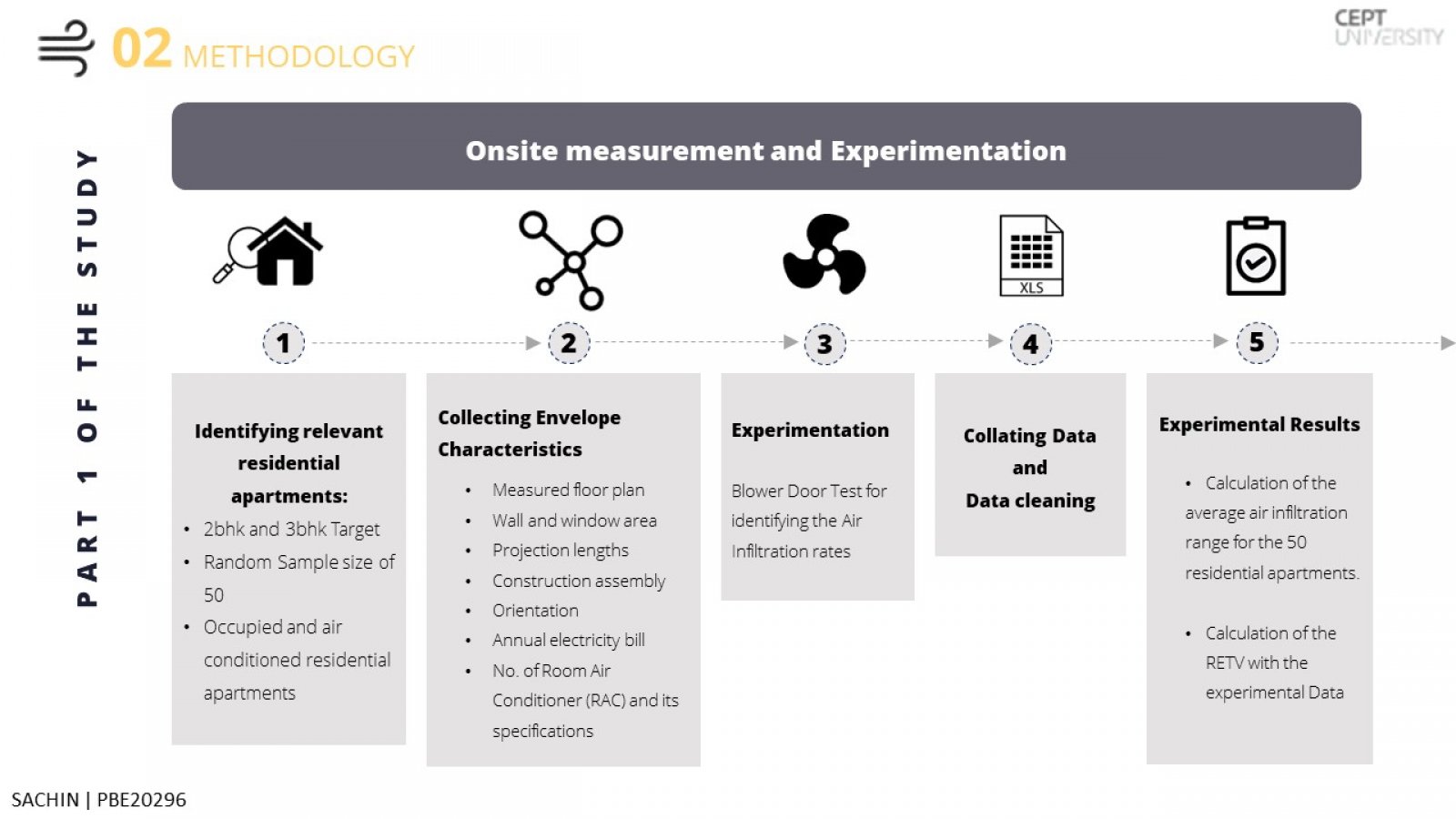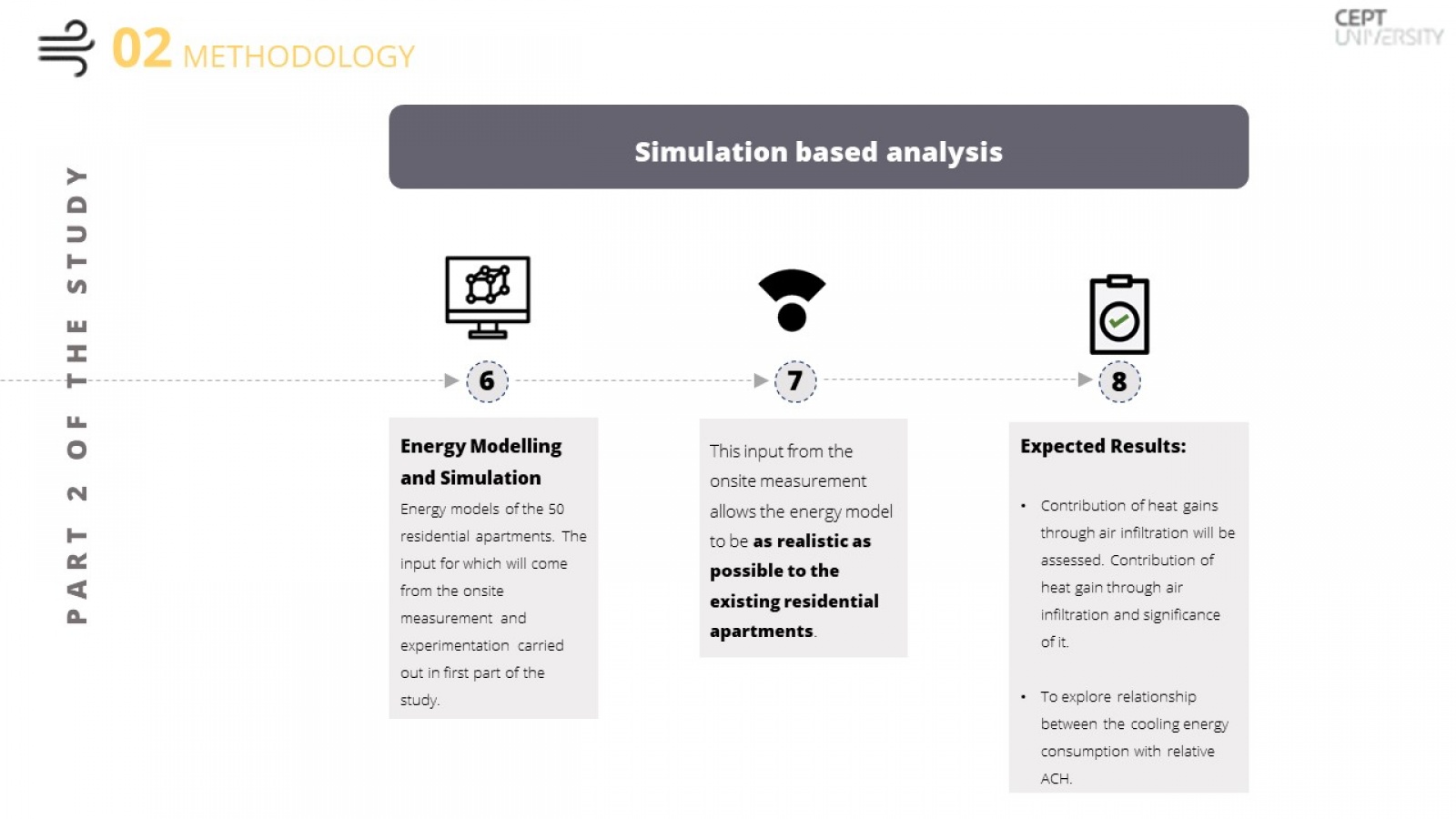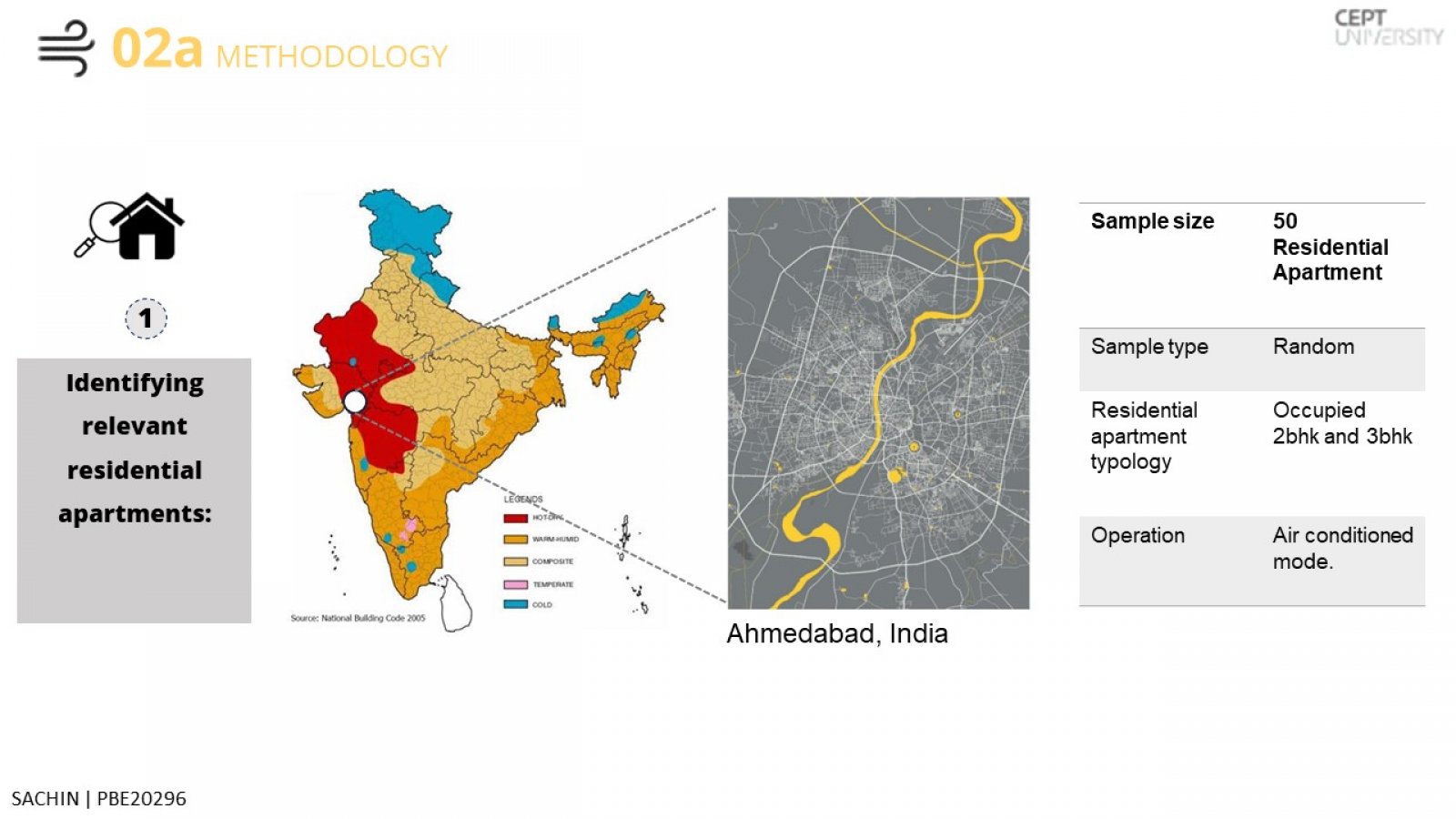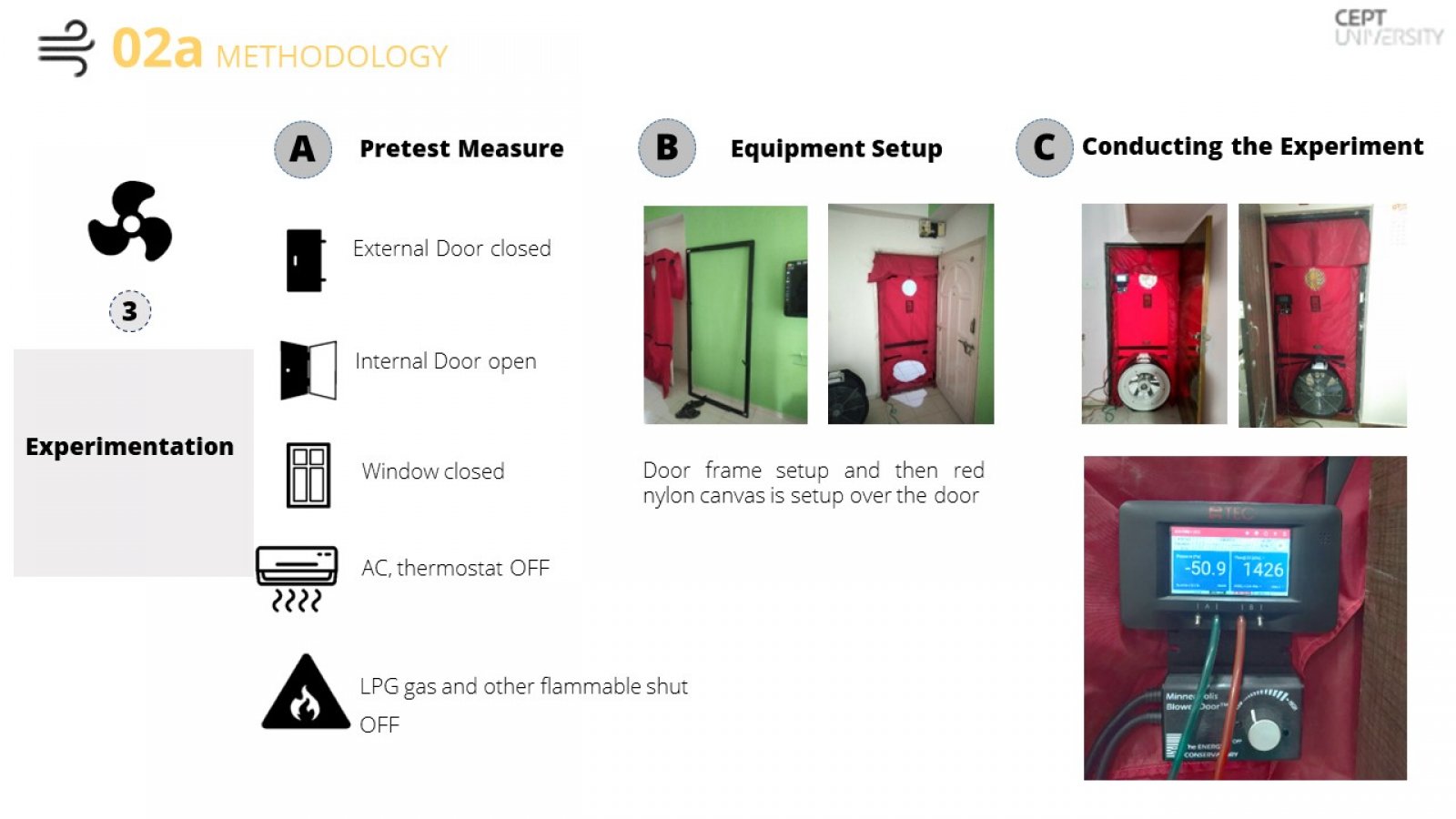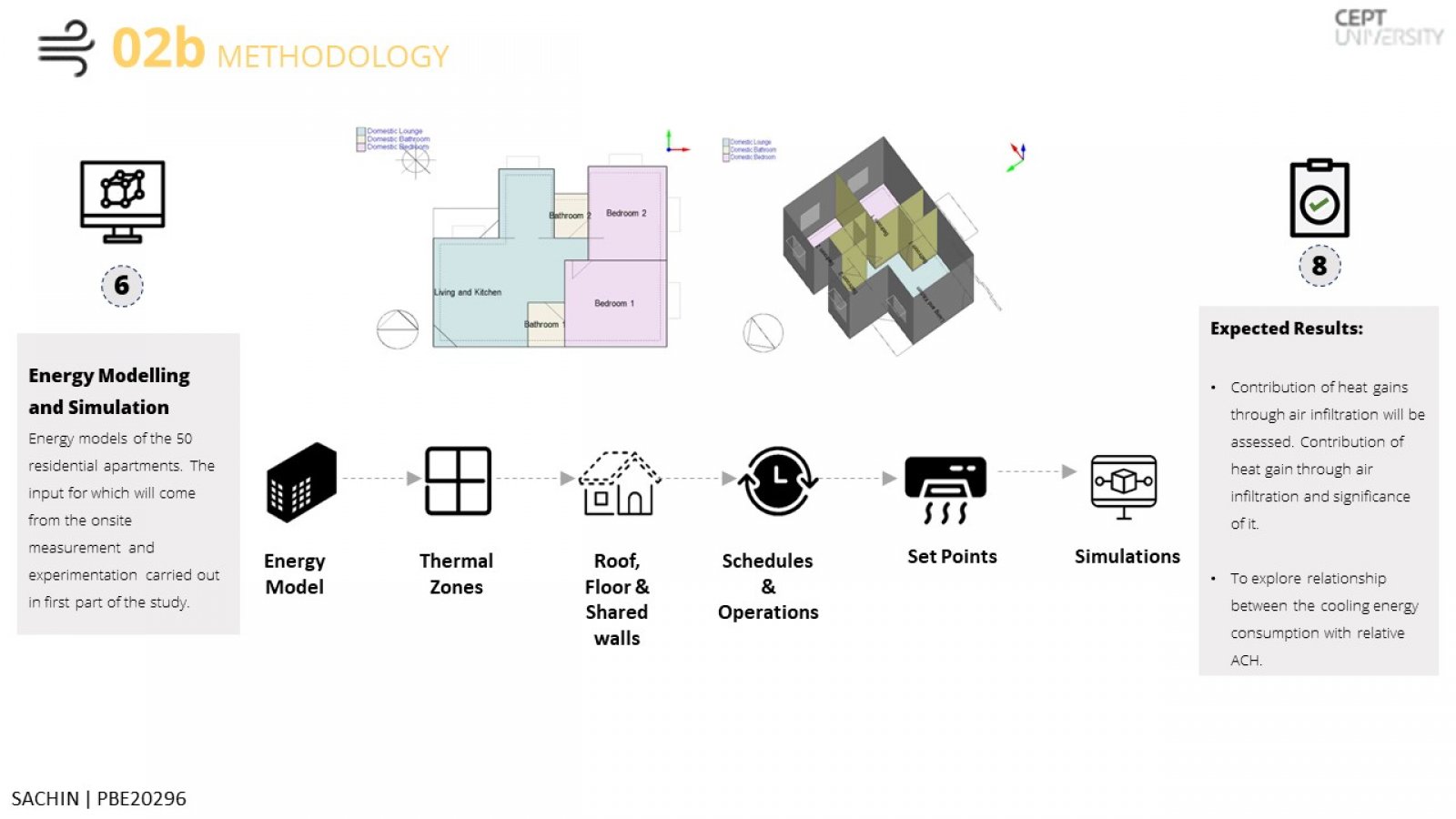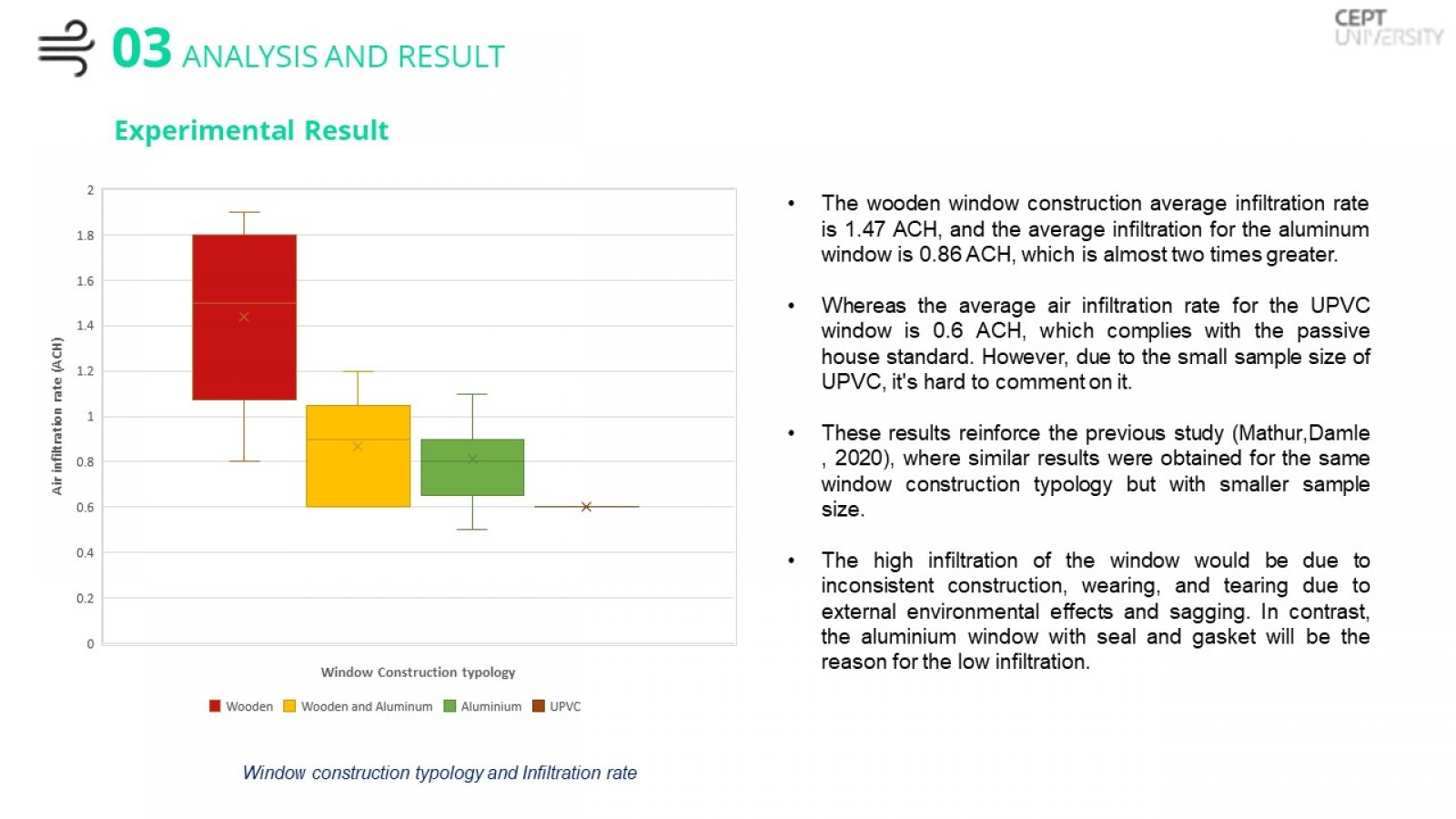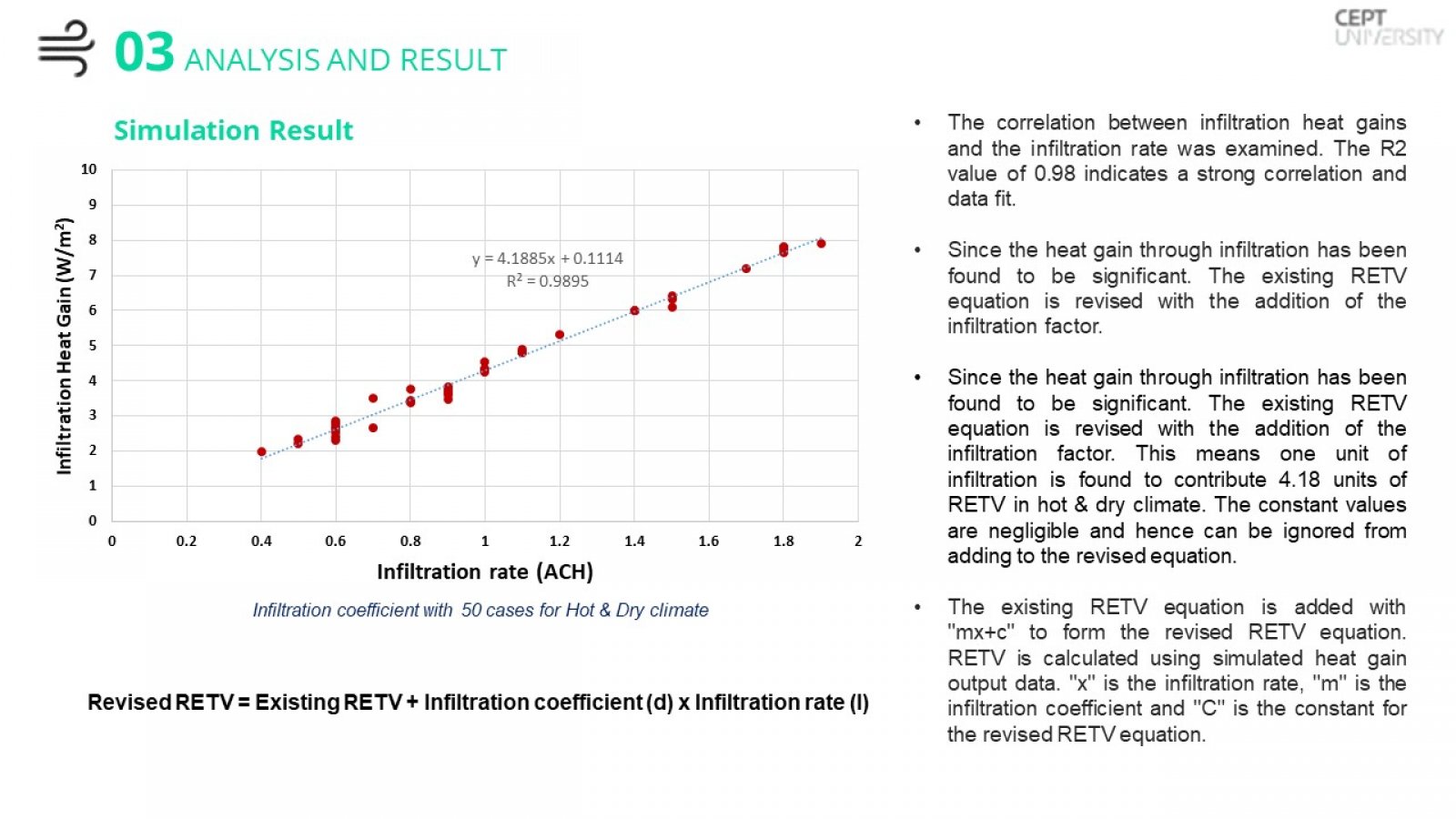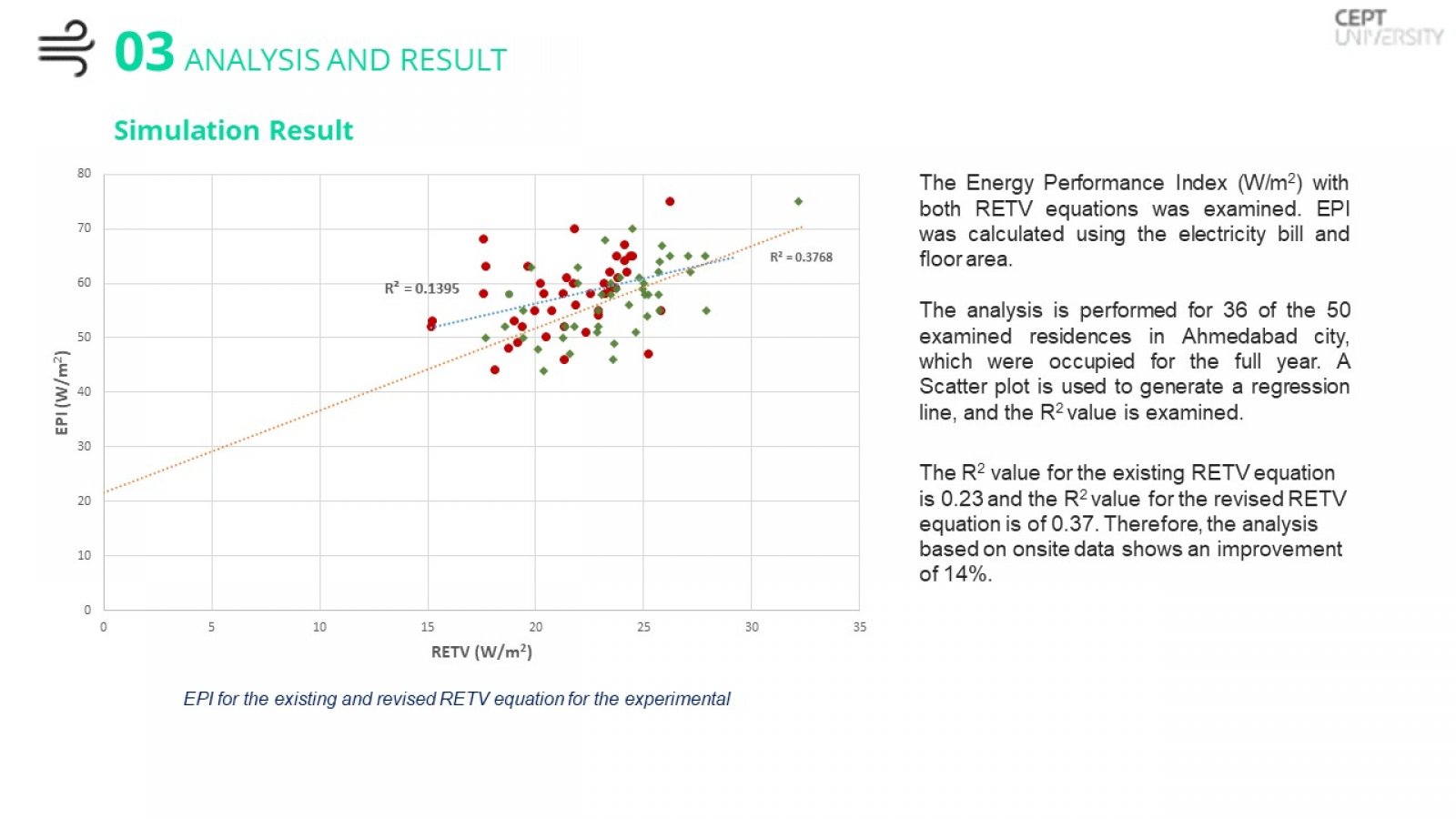Your browser is out-of-date!
For a richer surfing experience on our website, please update your browser. Update my browser now!
For a richer surfing experience on our website, please update your browser. Update my browser now!
India census of 2011, shows that approximately 60%-70% of all the households fall into one room and two-room categories. The current electricity consumption in residential buildings is about 75% of the whole building sector and is predicted to rise by more than eight times by 2050. As the standard of living increases and more homes in India are getting air-conditioned, the space cooling energy demand will be more than triple by 2050. Hence, various countries are establishing increasingly stringent requirements to reduce the energy demand of buildings. Building codes specify the overall thermal transmittance values of the building envelope to address energy efficiency. In India, the Energy Conservation Building Code Residential (ECBC-R) is a recent energy conservation code as a policy measure. It gives a quantitative measure of heat gains through the building envelope (excluding the roof) with the help of the RETV metric. However, the RETV metric does not consider the heat gain through air infiltration which is a character of the building envelope. Airtightness is the main envelope property impacting air infiltration. A too leaky building envelope will lead to higher cooling energy consumption and a too airtight building will deteriorate the indoor air quality of the space. Therefore, the current study tries to measure the air infiltration rate for the residential apartments of Ahmedabad and its effect on the RETV metric. Initially, Onsite blower door experiments were carried out to find the range of air infiltration for the residential apartments in Ahmedabad for the sample size of 50. In addition, various significant onsite parameters of the building envelope (wall & window area, construction assembly, depth of overhangs, etc.) were measured and formulated. Later, the energy simulation was done with the input from the onsite measurements. This simulation-based analysis was carried out to find out the infiltration heat gains. These infiltration heat gains were incorporated into the existing RETV metric through multiple linear progression analyses. The results shows that infiltration rate vary from 0.5ACH to 1.9ACH for residential apartments of Ahmedabad, India. The infiltration rate is dependent on the window construction typology. The wooden window construction average infiltration rate is of 1.47 ACH than the average infiltration for aluminum window is 0.86 ACH. Additionally, the “year of construction” is one of the parameter which effects the infiltration rates. It was found infiltration rates for the newly built apartments with wooden window construction is less as compared to other ages of apartments. The significance of heat gain from infiltration is found as high. The infiltration coefficients are derived with the data from onsite measurements for 50 residential apartments for the revised RETV equation. There is an improvement of 11% can be seen in the energy performance with the revised RETV equation.

